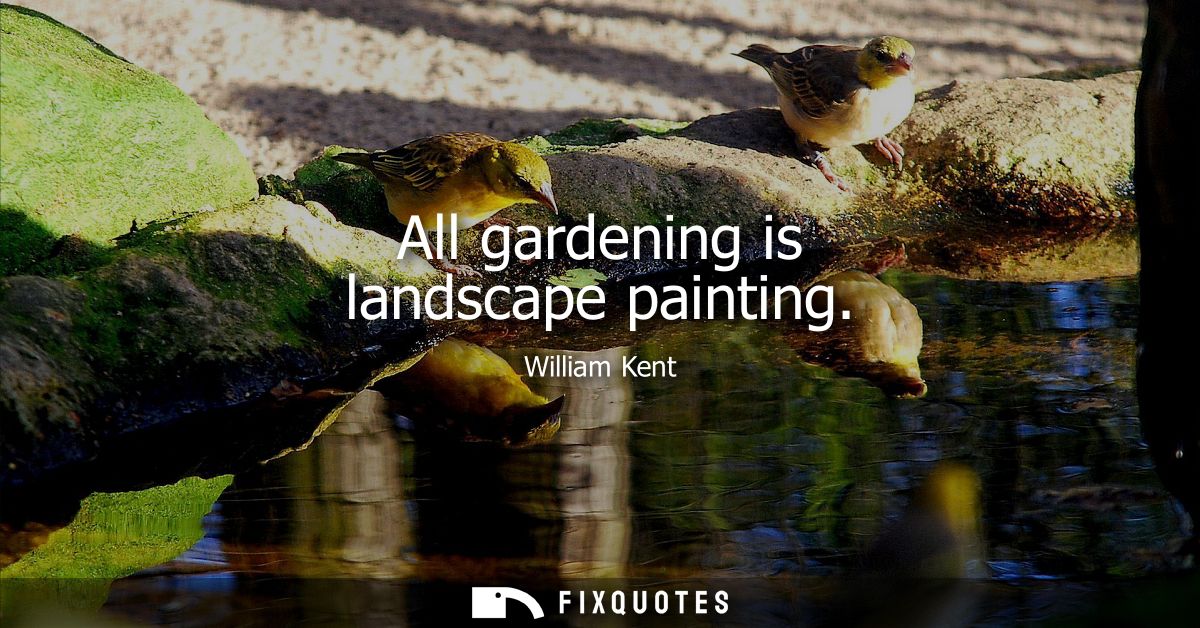"All gardening is landscape painting"
About this Quote
William Kent’s assertion that “All gardening is landscape painting” invites us to consider gardening as an art form akin to painting. Just as a painter arranges elements of color, form, and texture onto a canvas to create a harmonious whole, a gardener shapes living plants and landscapes to craft visually compelling scenes. The garden becomes a dynamic canvas, changing with the seasons and time, yet always reflecting the intention, skill, and vision of its creator.
Gardening, like painting, demands an understanding of composition. Trees, shrubs, flowers, and pathways serve as the pigments and brushstrokes. The placement of a bright border of tulips beside a tranquil green lawn, or the careful arrangement of winding paths that invite exploration, parallels the painter’s use of contrasting colors and leading lines. Both arts seek to evoke emotion, to frame views and moments that resonate with beauty and meaning.
Additionally, gardening involves responding to the natural context, much as a landscape artist interprets the qualities of light and atmosphere in the open air. The gardener must work with the existing topography, sunlight, soil, and climate, coaxing order and aesthetic pleasure from the given environment rather than imposing a rigid design. This collaboration with nature mirrors how a painter strives to capture the spirit of a place rather than merely copy its details.
On a deeper level, seeing gardening as landscape painting acknowledges the imaginative act at play. Every planted border, shaped hedge, or perched bench suggests a narrative and provides sensory delights. The garden, like a well-composed painting, offers viewpoints, frames vistas, and guides the observer’s experience. It becomes a living artwork, open to interpretation, continually renewing itself with growth and change.
Through this lens, gardening transcends mere utility or decoration. It emerges as a practice of aesthetic judgment, creativity, and emotional expression. As Kent implies, those who tend gardens participate in a centuries-old dialogue between artistic vision and the forces of nature, using plants and space just as the painter wields brush and pigment: to create beauty and inspire wonder.
More details
About the Author

